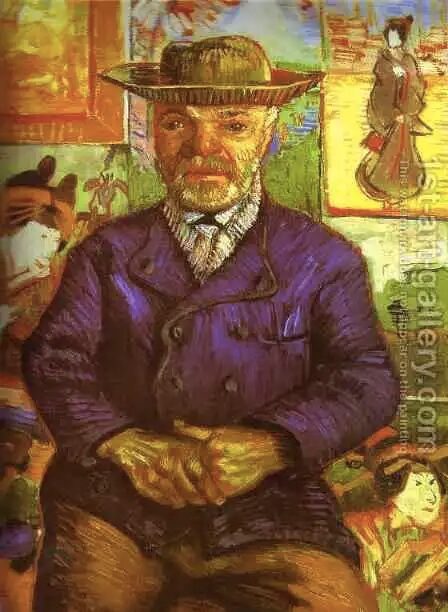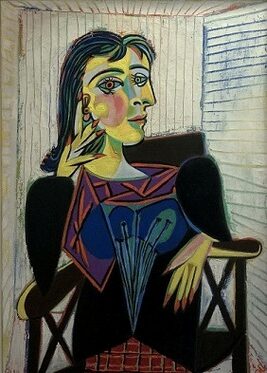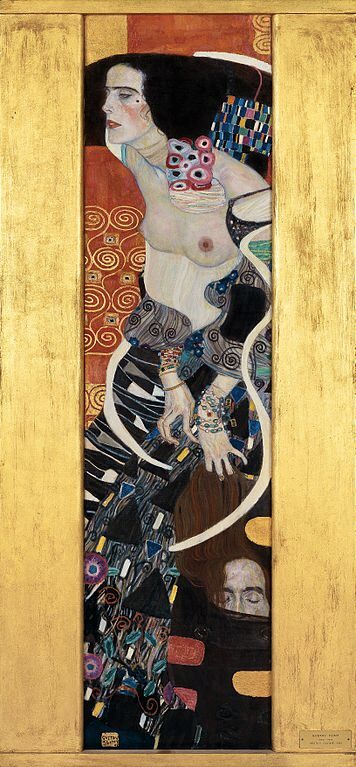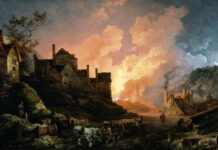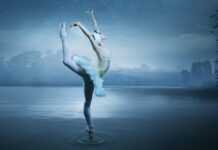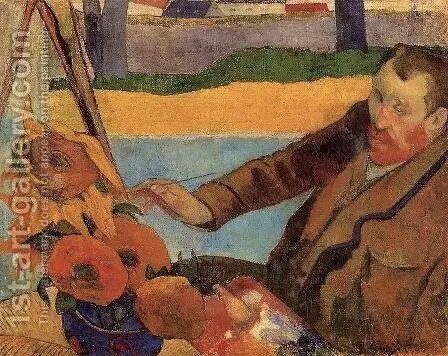
Portrait paintings have been around since practically the dawn of civilization. Since humans became self-aware, they have been fascinated with their image. Whether in cave paintings or Egyptian hieroglyphics, the origins of portrait painting truly go back a long way.
Over the years, portraits have played a significant role in art for their historical relevance and their showcasing of an artist’s talent and skill, and artists have pursued the genre for many reasons. Whether it be a paying job, a means of practising the craft, or a tool of self-examination, portraits are a feature throughout many of the greatest artist’s portfolios.
The following article examines some of the most well-known portrait paintings and the artists who painted them. In particular, the vividness of color and uniqueness of style makes them stand out from the rest of the pack. Like Russian artist, Wassily Kandinsky said, “Color is a power which directly influences the soul”.
The Painter of Sunflowers by Paul Gauguin
French Post-Impressionist painter Paul Gauguin is famous for using tropically vivid color palettes. Most of his paintings, especially from the latter half of his career, involve an eye-catching mix of bold yellows, sultry oranges, and intense red hues.
This was primarily because Gauguin spent many years living abroad in South America and the French Polynesian colony of Tahiti. During that time, the French painter painted many portraits of the local inhabitants, honing his portrait craft to the expert degree he is now revered for.
Before he emigrated from France, portrait painting was still a staple of Gauguin’s work. Gauguin was even a close friend of fellow portrait maestro Vincent Van Gogh. Gauguin’s portrait of “The Painter of Sunflowers” sees Van Gogh act as the model of the piece as he paints his famous sunflowers. It is truly a portrait of profound importance to the genre’s history.
Portrait of Père Tanguy by Vincent Van Gogh
Speaking of Vincent Van Gogh, you can’t have a list of colorful portrait paintings without mentioning the prolific Dutch master. There isn’t an artist in the entirety of art more famous than Van Gogh regarding the medium of portrait and self-portrait composition, successfully creating the most famous portraits in the world.
Van Gogh’s self-portraits are instantly recognizable worldwide and stand as some of his collection’s most highly regarded paintings. Because of this acclaim, you might be forgiven for thinking that the Post-Impressionist painter only painted self-portraits, but this couldn’t be further from the truth.
Van Gogh painted an abundance of other portraits. One such portrait is the “Portrait of Père Tanguy”, which embodies all the magic associated with Van Gogh’s art. In the painting, the lavish brushstrokes of color leap off the canvas, while in the background, the depiction of some of Van Gogh’s other artwork and Japanese prints make for a wonderfully vivid backdrop. This painting inspired many artists who still redraw this portrait. Many art lovers buy reproductions of this painting in the 1st-art-gallery.com.
Portrait of Dora Maar by Pablo Picasso
Cubist painter Pablo Picasso created some of the most famous portrait paintings in art history. They are like nothing else ever seen, and whenever you see one of his paintings, it will be instantly identified as a “Picasso” painting.
Like all the other painters on this list, Picasso’s fame as an artist precedes him, and not many people realize how many of his paintings are portrait paintings. This may be due to the evolution of the obscurity of his artwork. Nevertheless, the fact remains that the majority of his paintings are, in fact, portrait pieces.
The Weeping Woman, Le Rêve, and Les Demoiselles D’Avignon, three of the Spanish artist’s most famous paintings, are all art portraits, believe it or not. Another fabulously famous portrait of Picasso is the Portrait of Dora Maar. It holds all the attributes associated with a Picasso masterwork and is just one of several Surrealist portraits featuring the woman.
Judith II by Gustav Klimt
When discussing the most colorful and vibrantly magnificent portrait paintings, Austrian artist Gustav Klimt might take the number one spot as the greatest of all time. His use of lusciously rich colors such as gold and the adoption of stylized patterning results in a painting style like never before.
These unique attributes were considered secondary to Klimt himself, though, for his first love was portraying the beauty and eroticism of the female form. As a result, practically all his paintings involve a fascinating and provocative portrayal of a beautiful woman in one shape or another. His vibrant and tantalizing masterpiece titled Judith II is no exception.
It holds all the hallmarks of Klimt’s style, including a half-naked woman in an erotic and free-spirited posture. This portrait differs from some of Klimt’s others; however, it is the heavier influence of Japanese motifs and the more abstract nature of the model’s appearance. These features, accompanied by Klimt’s style, make it a one-of-a-kind masterpiece.
Woman in Blue by Henri Matisse
Another artist who crosses my mind when spectacular color is being considered is French Expressionist painter Henri Matisse. This visually driven and color-conscious artist specialized in the illumination of intense and bold color.
Matisse can even be credited as the forefather of modern art in promoting color as the primary focus over composition and subject matter. This perspective of color first revolutionized how paintings would be painted after that.
The Woman in Blue portrait is a perfect example of this philosophy. The fierce color within is the first thing noticed and stands out from everything else in the painting. The exotic colors and abstract nature of the woman and her surroundings are reminiscent of something from Alice in Wonderland or another high fantasy adventure.
Conclusion
Studying these vivid paintings begs the question, what is the essential element of art, color or substance? Whatever the answer, one thing is sure: color is a language everyone understands.

